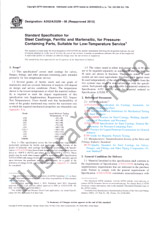Potřebujeme váš souhlas k využití jednotlivých dat, aby se vám mimo jiné mohly ukazovat informace týkající se vašich zájmů. Souhlas udělíte kliknutím na tlačítko „OK“.
ASTM E3029-15
Standard Practice for Determining Relative Spectral Correction Factors for Emission Signal of Fluorescence Spectrometers
Automaticky přeložený název:
Standardní praktiky pro stanovení relativní spektrální korekčních faktorů pro emisi Signál fluorescenční spektrometry
NORMA vydána dne 1.9.2015
Informace o normě:
Označení normy: ASTM E3029-15
Poznámka: NEPLATNÁ
Datum vydání normy: 1.9.2015
Kód zboží: NS-618098
Počet stran: 5
Přibližná hmotnost: 15 g (0.03 liber)
Země: Americká technická norma
Kategorie: Technické normy ASTM
Kategorie - podobné normy:
Anotace textu normy ASTM E3029-15 :
Keywords:
calibration, fluorescence, fluorometer, luminescence, qualification, reference materials, spectral correction, spectrometer, spectroscopy, validation,, ICS Number Code 17.180.01 (Optics and optical measurement in general)
Doplňující informace
| Significance and Use | ||||||||
|
3.1 Calibration of the responsivity of the detection system for emission (EM) as a function of EM wavelength (λEM), also referred to as spectral correction of emission, is necessary for successful quantification when intensity ratios at different EM wavelengths are being compared or when the true shape or peak maximum position of an EM spectrum needs to be known. Such calibration methods are given here and summarized in Table 1. This type of calibration is necessary because the spectral responsivity of a detection system can change significantly over its useful wavelength range (see Fig. 1). It is highly recommended that the wavelength accuracy (see Test Method E388) and the linear range of the detection system (see Guide E2719 and Test Method E578) be determined before spectral calibration is performed and that appropriate steps are taken to insure that all measured intensities during this calibration are within the linear range. For example, when using wide slit widths in the monochromators, attenuators may be needed to attenuate the excitation beam or emission, thereby, decreasing the fluorescence intensity at the detector. Also note that when using an EM polarizer, the spectral correction for emission is dependent on the polarizer setting. (3.2 When using CCD or diode array detectors with a spectrometer for λEM selection, the spectral correction factors are dependent on the grating position of the spectrometer. Therefore, the spectral correction profile versus λ3.3 Instrument manufacturers often provide an automated procedure and calculation for a spectral correction function for emission, or they may supply a correction that was determined at the factory. This correction can often be applied during spectral collection or as a post-collection correction. The user should be advised to verify that the automated vendor procedure and calculation or supplied correction are performed and determined according to the guidelines given within this standard. |
||||||||
| 1. Scope | ||||||||
|
1.1 This practice (1)2 describes three methods for determining the relative spectral correction factors for grating-based fluorescence spectrometers in the ultraviolet-visible spectral range. These methods are intended for instruments with a 0°/90° transmitting sample geometry. Each method uses different types of transfer standards, including 1.2 The values stated in SI units are to be regarded as standard. No other units of measurement are included in this standard. 1.3 This standard does not purport to address all of the safety concerns, if any, associated with its use. It is the responsibility of the user of this standard to establish appropriate safety and health practices and determine the applicability of regulatory limitations prior to use. |
||||||||
| 2. Referenced Documents | ||||||||
|
Odebírejte informace o nově vydaných normách ZDARMA:
Chcete pravidelně odebírat informace o nově vycházejících normách z celého světa a to zcela zdarma?
Přihlašte se k odběru. Vše je velice jednoduché a absolutně ZDARMA.
Na výběr máte vydavatele z celého světa.




 Cookies
Cookies
